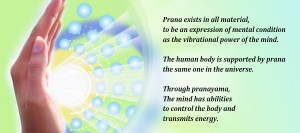Ayur means ‘life’ and Veda means ‘knowledge’, so Ayurveda is a science of life- It is a way of preserving health, understanding what destroys health, and improving the quality of health. It encourages the elimination of disease and it increases the lifespan.
In Ayurveda we need to remember five fundamental points. Firstly, everything that exists outside of ourselves has its counterpart inside. A microcosm always exists in relation to a macrocosm. In this instance, the microcosm is a human body covered with skin. We tend to see the skin as the boundary between the microcosm and the macrocosm, our skin somehow separating us from life. Some of us might define the limit as being a little further out, perhaps in our subtle bodies, but wherever it is, there is a limit somewhere. Then there is the macrocosm that continuously comes in and touches the microcosm, and the microcosm continuously goes out and touches the macrocosm. That is the relationship. We are impinged upon constantly and then we impinge back.
In the process of being impinged upon, we use our organs of perception, the Gyanendra. We feel the pressure of life and the heat of life on our skin, we see the light of life through our eyes and its sounds through our ears. We get messages, signals coming in all the time. Then we react to life; we impinge back through our karmendriyas, our organs of action, hands, feet, tongue, etc. We react to the world in as appropriate away as we can. This is the first principle of Ayurveda.
Secondly, there are five elements or tattvas: earth, water, fire, air, and ether. Of this tattvas, water, fire and air are the most important to Ayurveda, because the human body is severity to eighty percent water. Heat is also important, as are temperature and air. The third point is that like increases like. If I burn my hand and then go into the sun, the sun will increase the temperature of the burn. So I put it into ice because I want to decrease the fire.
Ayurveda is not an intellectual science. It is a science that builds certain simple, commonsense precepts into a basic framework on which we can structure our understanding of life. So the first principle is that there is a microcosm interacting with a macrocosm. The second principle is that of the five elements we really only need to remember water, fire and air. The third is that like increases like. The fourth is that food is medicine and medicine is food. The fifth is that whatever affects the body affects the mind and vice versa. These are the five tenets of Ayurveda.
Ayurveda also talks about our individual nature, because even though we are all composed of five elements, we are all different in some way. We may have more earth or water in our nature and some people may have more air. In Ayurveda, the key to health is understanding your constitution, knowing how much of each element you have in your nature. Diagnosing the human constitution takes training, time and experience, but in brief, we can divide human nature into three basic constitutional types, Vata, Pitta and Kapha. The Vata constitution has a lot of air and space. The Pitta constitution has more fire and water and the Kapha has more earth and water.
Air is light, it moves quickly and is generally cool. Vata people tend to be cool and dry, with dry skin, nails, hair and internal organs. Because Vata has both air, and Space, Vata people get easily spaced-out, but they are very quick thinkers. They can be very spontaneous and creative but if the elements of their nature become unbalanced, they will suffer from anxiety, fear and insecurity. They will not feel grounded because they do not have enough earth to feel grounded and solid.
Kapha people are the opposite. They have watery constitutions and do not like the cold or damp. If their constitutions become unbalanced they can become lethargic and over-weight.
Pitta people have a lot of heat in their systems. They are very concentrated types and if their pitta is not balanced they can become obsessive and fixed. They have a medium constitution and tend to be muscular. They like to move but not as much as vata. They have tremendous powers of concentration and very good digestion. Because they are fiery types, their digestive fire is very powerful.
In Sanskrit dosha means waste. As the human body takes in food and other substances to digest, it produces waste. In the Vata person, it produces a lot of wind in the organs. Vata has a dry, airy nature and a tendency to anxiety. A pitta person will tend to suffer from inflammation and heat. They will tend to have digestive troubles, with too much heat and bile and will tend to get fevers and inflammation in their internal organs. Kapha people will tend to get an excessive build-up of mucus in various parts of the body, blockage and stagnation of various organs and build-nip of fat in the arteries.
The second way to balance the doshas is to improve our digestion, in a broad sense. As a microcosm in relation to a macrocosm, We are not just taking in food. we taking in air, water, relationships, emotions, intellect, psychic vibrations, spiritual things. How many can we take into our bodies and assimilate? That is the key question. How much goes in and then gets constipated? Not only food gets constipated but also emotional experiences and intellectual processes- Our ideas get stuck. Or it can be a psychic problem, attitudes we take in and hold onto such as, “I do not like myself”, or “I do not like the world In some way or another.” These ideas get stuck inside us and we do not digest and eliminate them.
Digestion of life is the key. When we digest something assimilate it and make it part of ourselves, whether it is food, an idea or an emotion. So we need to digest it well otherwise it will get stuck somewhere and surface as something we do not want, such as disease or anxiety, fear, hatred or sadness.
The key to good digestion is Agni. Agni is the transformative power that causes digestion to work. Agni is the flame of consciousness, a flame that ignites Itself and which does not need any outer cause. The flame of Agni allows us to hear and digest information, to take in emotions, digest them and excrete them, to get rid of all the toxins which are poisoning the mind and body. So, the maintenance of Agni is very important. It also has to be brought into balance and harmony with the other doshas, Vata, Pitta, and Kapha. One way we can do this through yoga practices.
What generally do in meditation practice?
The first step is to ground ourselves back into the earth, into the body, into the. essential nature. To do that we become aware of the body and relax it. Then we work with the breath and settle the prana down so that our minds become calm. Then we can focus on the Agni in whatever form we choose. We can see it as consciousness, or as our psychic symbol and place it at the third eye, in the throat, the heart, the belly or the pelvis. Working with the body, the breath and visualization we come into tune with Agni and start to balance the three doshas. As we tune into the doshas we gain direct perception of our essential nature. Then we start to notice that we have too much mucus and need to do kunjal, too much bile and need to do shanka-prakshalana, too much wind and need to do yoga Nidra or to practice pranayama in a certain way. Yoga techniques are for self-regulation, and by using them in this way we can develop autonomy.
When we are self-regulating we can bring Yoga into our lives more and more, not just during our morning or evening practices, but throughout the day, eating, sleeping, working, or interacting with people. Then the other yogic philosophies will open up for us as we come into a more grounded and aligned state.





